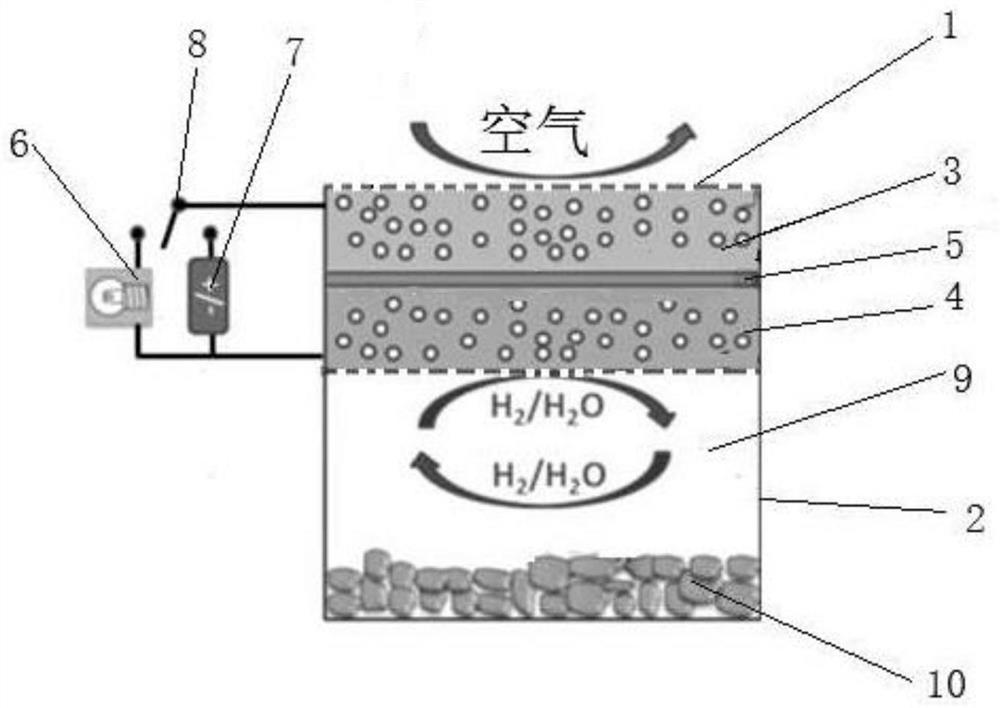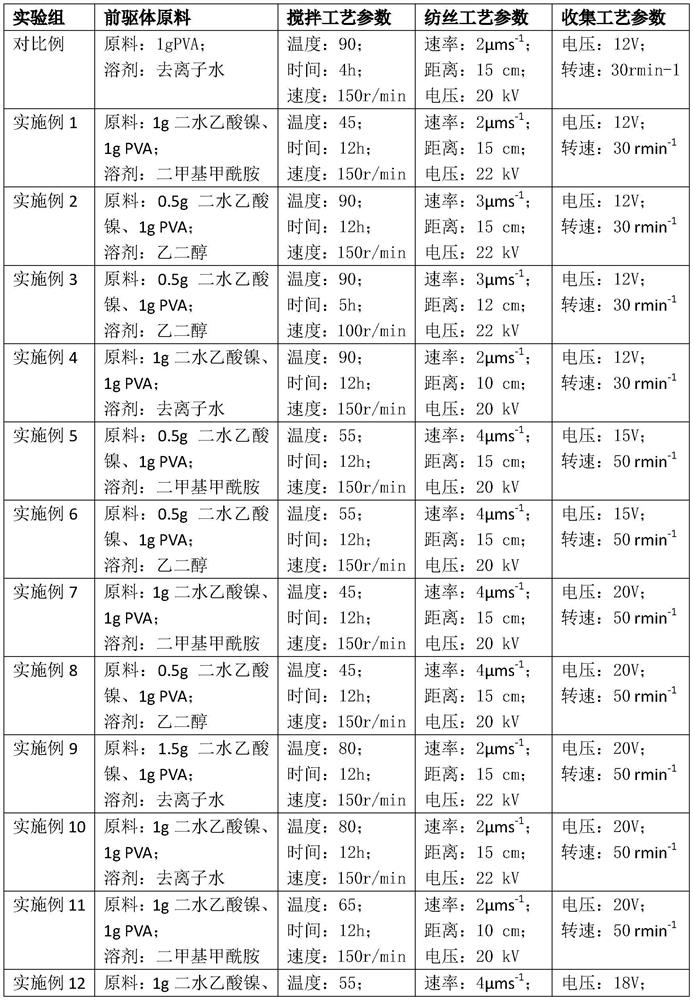Nickel-based pore-forming agent and application thereof in fuel cell
A fuel cell and pore-forming agent technology, which is applied to battery electrodes, circuits, electrical components, etc., to achieve the effects of enhancing electrochemical activity, increasing the electrochemical reaction area, and accelerating material diffusion
- Summary
- Abstract
- Description
- Claims
- Application Information
AI Technical Summary
Problems solved by technology
Method used
Image
Examples
Embodiment 1
[0028] Embodiment 1 (best example): the preparation method of anode of the present invention:
[0029] S1. Preparation of anode primary powder: pre-calcine the nickel-containing metal oxide powder at 600°C for 2 hours, then mix and grind it with 8% mol YSZ electrolyte powder for 2 hours to obtain the anode primary powder, in which the nickel-containing metal oxide The mass ratio to YSZ is 1:1; the nickel-containing metal oxide is NiO;
[0030] S2. Preparation of Ni-PVA electrospun fibers: Dissolve 1g of nickel acetate dihydrate and 1g of PVA in 20mL of dimethylformamide, stir at 45°C for 12h at a stirring speed of 150r / min to make a precursor solution; Operated on an electrospinning machine, the spinning speed of the injector is 2μms -1 , the distance between the collecting drum and the spinning nozzle is 15cm, and the voltage is 22kV; the drum collector is made of aluminum sheet and copper wire, and it takes 30rmin to -1 The speed drives the drum to rotate to collect Ni-PVA...
Embodiment 2-15
[0033] Embodiment 2-15: The preparation method of the fuel cell anode of the present invention:
[0034] S1, prepare anode initial powder: same as embodiment 1;
[0035] S2. Preparation of Ni-PVA electrospun fibers: the steps are the same as in Example 1, and the process parameters are designed in Table 1;
[0036] S3, mixing the anode initial powder and the Ni-PVA electrospun fiber: same as Example 1;
[0037] S4. Preparation of fuel cell anode: same as in Example 1.
[0038] The preparation process parameter contrast of each embodiment of table 1
[0039]
[0040]
Embodiment 16
[0041] Embodiment 16 electrochemical performance test
[0042] The fuel cell anodes prepared in the above examples are used to prepare fuel cell anodes coated with a solid electrolyte on one side. The method is as follows: first prepare the electrolyte slurry, and then use the slurry spin coating method to place a drop of the electrolyte slurry on the In the center of the outer surface of the anode side of the above-mentioned fuel cell, the speed of the homogenizer is 6000r min -1 , the running time is set to 60s, and the centrifugal force generated by the high-speed rotation of the fuel electrode driven by the glue homogenizer makes the electrolyte slurry evenly coated on the outer surface of the fuel cell anode side, and then the fuel cell anode with a layer of electrolyte slurry attached is placed at 400 After drying, spin-coat the second layer and the third layer on the formed first layer of electrolyte film. Each layer must be dried at 400°C. Finally, there will be a tota...
PUM
| Property | Measurement | Unit |
|---|---|---|
| energy conversion efficiency | aaaaa | aaaaa |
Abstract
Description
Claims
Application Information
 Login to View More
Login to View More - Generate Ideas
- Intellectual Property
- Life Sciences
- Materials
- Tech Scout
- Unparalleled Data Quality
- Higher Quality Content
- 60% Fewer Hallucinations
Browse by: Latest US Patents, China's latest patents, Technical Efficacy Thesaurus, Application Domain, Technology Topic, Popular Technical Reports.
© 2025 PatSnap. All rights reserved.Legal|Privacy policy|Modern Slavery Act Transparency Statement|Sitemap|About US| Contact US: help@patsnap.com



